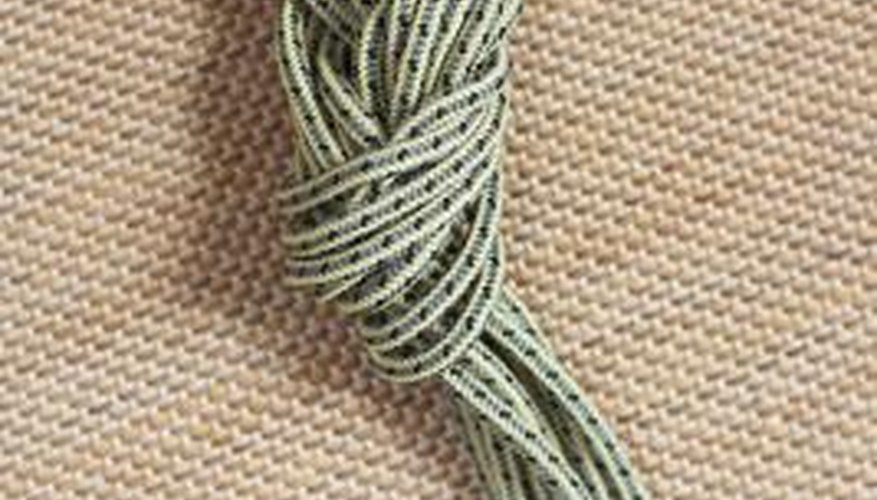Ripstop nylon is a common fabric for luggage, sleeping bags, backpacks, tents and outdoor clothing. It is also sometimes used in collapsible outdoor furniture, kites and boating accessories. This man-made fabric resists stretching or damage when exposed to water, and its special weave prevents minor tears from getting worse.
History
Nylon is a synthetic fibre originally developed in 1935 to replace silk. It was used in women's stockings, in everyday clothing, and to make tents and ropes. Ripstop nylon was specifically developed to provide a cheaper synthetic alternative for use in parachutes during World War II. The Merriam-Webster Dictionary notes that the term ripstop was first used in 1949, though the fabric itself may have already existed.
- Nylon is a synthetic fibre originally developed in 1935 to replace silk.
- The Merriam-Webster Dictionary notes that the term ripstop was first used in 1949, though the fabric itself may have already existed.
Structure
Ripstop nylon is woven with double threads placed at regular intervals to keep small rips or holes from spreading through the fabric. These threads keep rips contained in a relatively small area. In most cases, the double threads appear every 1/8- or 1/4-inch. Some ripstop nylon fabrics also have elastic threads to improve their ability to stretch and resist tearing.
- Ripstop nylon is woven with double threads placed at regular intervals to keep small rips or holes from spreading through the fabric.
Benefits
Ripstop nylon is relatively light in weight for its strength and can be treated to repel water and resist fire. Ripstop nylon works well in applications where low fabric weight is desirable, such as lightweight tents, flags, banners and sleeping bags. Heavier grades of ripstop provide extreme durability, making this fabric an ideal choice for luggage or protective clothing.
Disadvantages
Since nylon is a plastic-based synthetic material, it burns quickly when ignited and requires fireproofing treatment when used in camping supplies and some clothing. Nylon melts as it burns, increasing the risk of a serious burn. This material also "breathes" less well than many natural fabrics and can trap moisture close to the skin. Nylon is relatively strong by itself but tends to weaken with exposure to sunlight. Older tents or fabric furniture that has spent significant time outside may rip or tear unexpectedly.
- Since nylon is a plastic-based synthetic material, it burns quickly when ignited and requires fireproofing treatment when used in camping supplies and some clothing.
- Nylon melts as it burns, increasing the risk of a serious burn.
